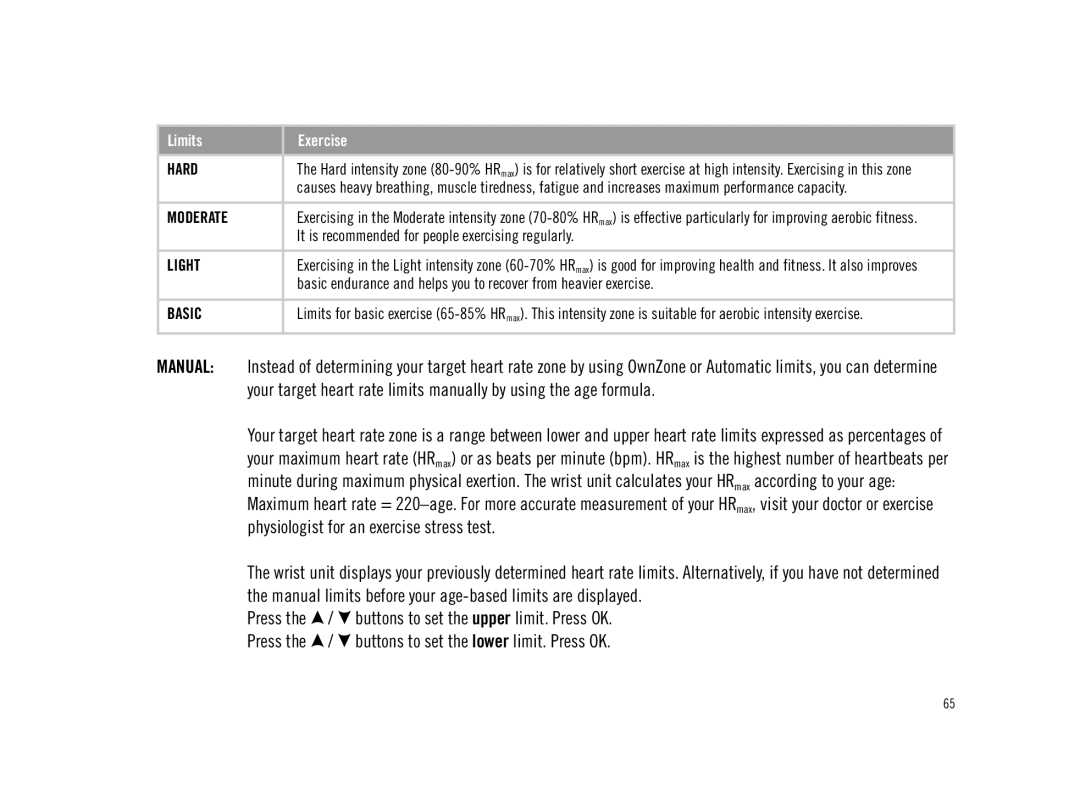Limits |
| Exercise |
| |
|
| |||
HARD |
| The Hard intensity zone | ||
|
| causes heavy breathing, muscle tiredness, fatigue and increases maximum performance capacity. | ||
|
|
| ||
MODERATE |
| Exercising in the Moderate intensity zone | ||
|
| It is recommended for people exercising regularly. | ||
|
|
| ||
LIGHT |
| Exercising in the Light intensity zone | ||
|
| basic endurance and helps you to recover from heavier exercise. | ||
|
|
| ||
BASIC |
| Limits for basic exercise | ||
|
|
| ||
MANUAL: | Instead of determining your target heart rate zone by using OwnZone or Automatic limits, you can determine | |||
| your target heart rate limits manually by using the age formula. | |||
| Your target heart rate zone is a range between lower and upper heart rate limits expressed as percentages of | |||
| your maximum heart rate (HRmax) or as beats per minute (bpm). HRmax is the highest number of heartbeats per | |||
| minute during maximum physical exertion. The wrist unit calculates your HRmax according to your age: | |||
| Maximum heart rate = | |||
| physiologist for an exercise stress test. | |||
| The wrist unit displays your previously determined heart rate limits. Alternatively, if you have not determined | |||
| the manual limits before your | |||
| Press the | / | buttons to set the upper limit. Press OK. | |
| Press the | / | buttons to set the lower limit. Press OK. | |
65
